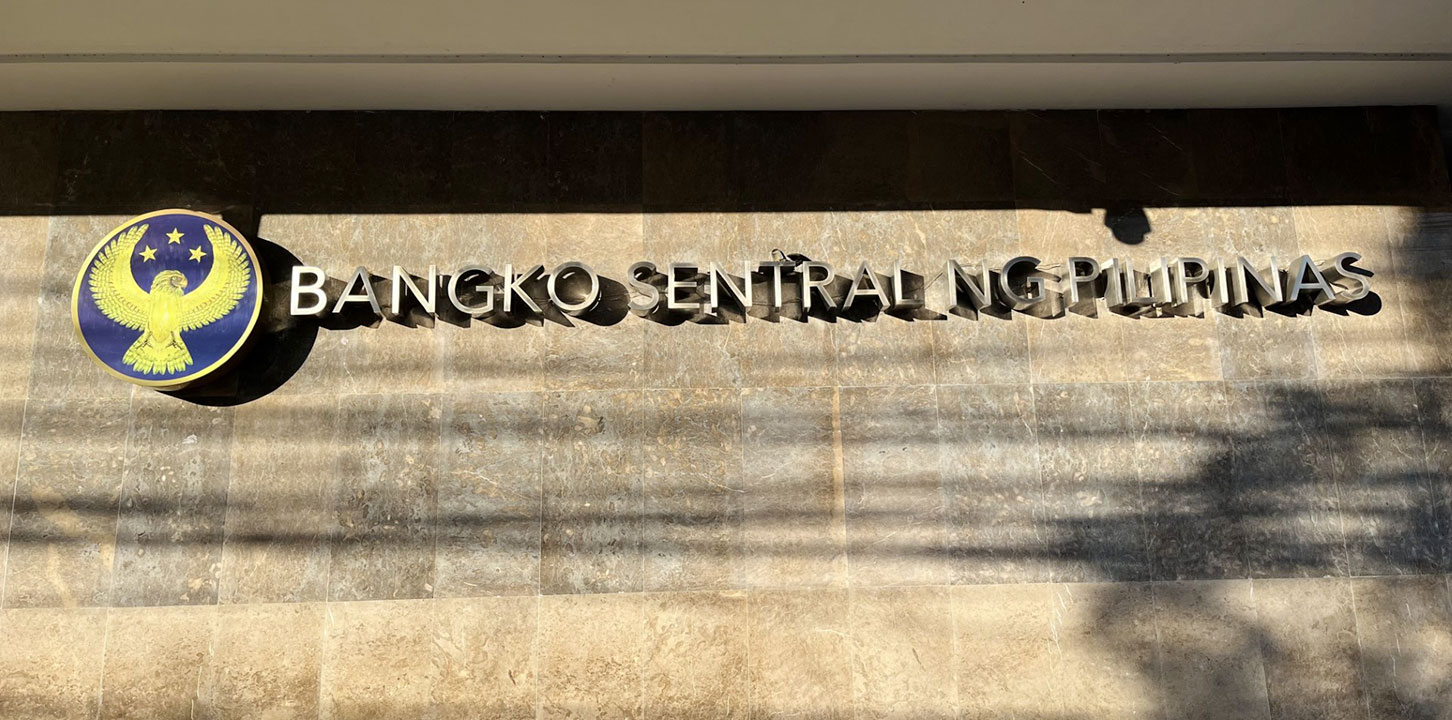




Quarterly Economic Growth Release: More BSP cuts to come
 DOWNLOAD
DOWNLOAD

Monthly Economic Update: Fed catches up
 DOWNLOAD
DOWNLOAD

Inflation Update: Steady and mellow
 DOWNLOAD
DOWNLOAD


BSP likely to keep policy stance tight

The Bangko Sentral ng Pilipinas (BSP) is still likely to keep its policy settings tight even as inflation settled within the target for a sixth straight month in May.
“The BSP will likely keep its monetary policy restrictive in the first half of the year as inflation risks (are) seen to persist in the near term,” Bank of the Philippine Islands (BPI) Lead Economist Emilio S. Neri, Jr. said in a statement.
Policy easing may only be considered once inflation stabilizes within the 2-4% target in the third or fourth quarter, he added.
“We continue to note the possibility of rate cut delay, given that the Philippine economy maintains a healthy pace of growth,” Citi Economist for the Philippines Nalin Chutchotitham said.
The central bank could cut rates as early as August, BSP Governor Eli M. Remolona, Jr. previously said.
At its May meeting, the Monetary Board kept the benchmark rate steady at a 17-year high of 6.5%. Its next policy review is on June 27.
The central bank raised borrowing costs by 450 basis points (bps) from May 2022 to October 2023 to tame inflation.
“Looking ahead, although we think upward momentum may persist in the next two months given unfavorable base effects, weaker peso and lingering food supply issues, we are still on track to achieve sub-4% as early as August,” Mr. Neri said.
This is in line with the BSP’s expectation that inflation could breach the 2-4% target band until July amid base effects.
Headline inflation quickened to 3.9% in May from 3.8% in April, its fastest print in six months or since 4.1% in November. May also marked the sixth straight month that inflation settled within the 2-4% target range.
“Some upside risks to inflation remain, from potential adjustments of excise taxes and minimum wages. Hence, we continue to expect the BSP to start cutting policy rates only in August, once inflation has peaked around July,” Ms. Chutchotitham said.
The recent peso weakness may also delay the BSP’s easing cycle, Ms. Chutchotitham said.
“Additionally, we think in the event of high FX (foreign exchange) volatility, the BSP might also opt for delayed rate cuts to support the peso, especially if the Fed begins cutting later than July,” she said.
Mr. Neri said the timing and magnitude of the BSP’s rate cuts would depend on the Fed. “If local inflation conditions are right, the BSP will likely respond immediately with rate cuts once the Fed begins its easing cycle,” he said.
Nearly two-thirds of economists are now predicting the Fed will cut interest rates in September, according to Reuters’ May 31-June 5 poll, offsetting recent bearish supply news, Reuters reported.
“If the BSP reduces its policy rate ahead of the Federal Reserve, a narrowed interest rate differential increases the risk of currency depreciation, which could outweigh recent deceleration in food prices,” Mr. Neri said.
Mr. Neri said the peso may appreciate in the second half of the year, when the Fed is expected to begin easing.
“However, while a Fed cut might lead to peso appreciation, its gains are likely to be smaller compared to other emerging market currencies given the substantial current account deficit of the country,” he added.
Mr. Remolona earlier said that the BSP does not need to “wait” for the Fed to cut before starting its own easing.
Meanwhile, Citi expects 25-bp rate cuts by the BSP in August, October and December, followed by 25-bp rate cuts in February, May and August 2025.
“Our forecasts are based on the assumption that the BSP would adjust policy stance to ensure that it is not too tight to support economic momentum,” Ms. Chutchotitham said.
However, Mr. Neri said he expects the central bank to reduce rates by 50 bps this year.
“We now expect a rate cut of around 50 bps this year, assuming the Federal Open Market Committee (FOMC) eases sometime in the second semester,” he added.
Meanwhile, Nomura Global Markets Research said it expects the BSP to only begin cutting rates in October, when inflation is “more entrenched within its 2-4% target.”
“Importantly, amid an improving inflation outlook, we still think BSP is unlikely to start easing before the Fed (our US team expects a first cut in September), in order to avoid adding to recent FX pressures under BSP’s flexible market-determined FX regime, which we believe BSP is clearly still sticking to.”
Nomura expects a total of 50 bps of rate cuts this year and another 100 bps for next year, bringing the key rate to 5%. — By Luisa Maria Jacinta C. Jocson, Reporter
This article originally appeared on bworldonline.com





 By BusinessWorld
By BusinessWorld